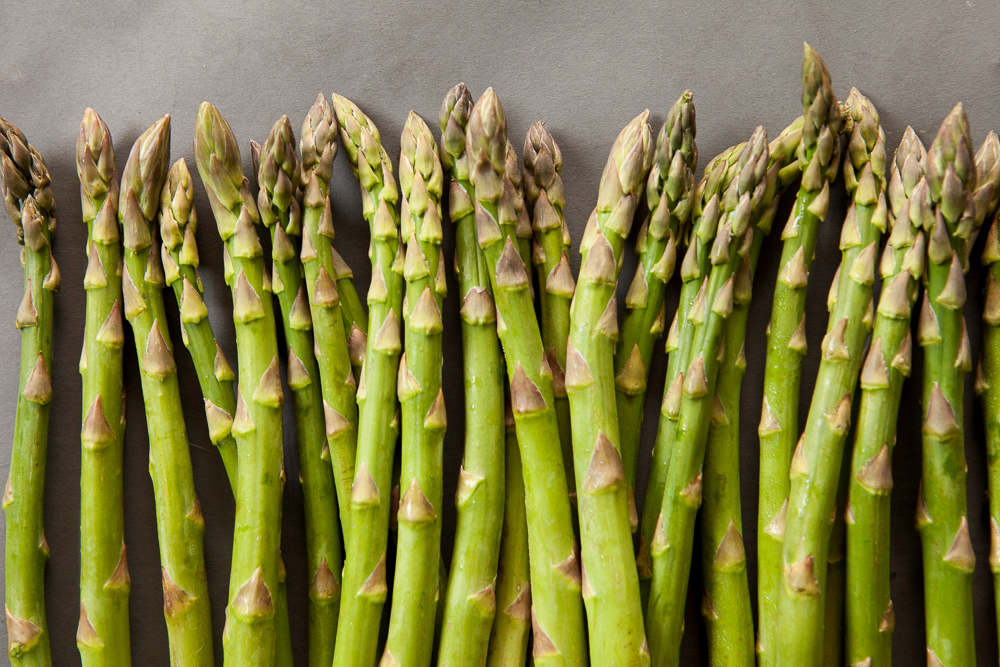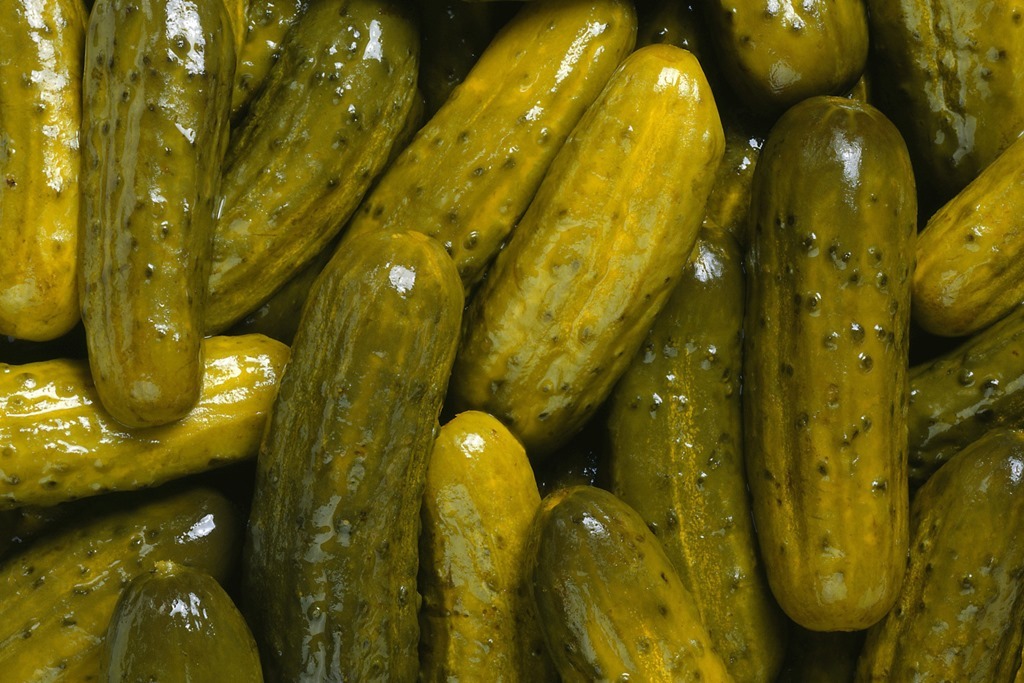Sneezing in the light and five more funny genetic traits
Initially, scientists have deciphered the genome to find the cause of certain diseases (and therefore their prevention and treatment). But dozens of years of conscientious study of human DNA have led to the fact that in the private office of the Atlas genetic test there are amusing signs that prolong life except for those that cause laughter.

People are divided into two types: those who distinguish the strange smell of urine after eating asparagus, and those who do not distinguish. This feature was noted long ago, as early as the beginning of the 18th century, and asked scientists the question: what is it connected with - the inability to catch the smell, or the inability of the body to process asparagus into such odorous substances.
')
To find out this question, scientists conducted a series of rather amusing, as it is easy to imagine, scientific experiments and made a discovery. It turned out that both hypotheses are correct, and the presence of strange smells in the urine after asparagus is a complex of hereditary traits. The distinction of smell depends both on the characteristics of the metabolism of asparagus acid, and on the ability to distinguish the smell of the sulfur-containing compound methanethiol.

Genetic Europeans rarely have this in mind, but earwax is different. Liquid and sticky or solid and dry - also depends on the genes. If you have a jar of cotton buds and deodorant in your bathroom, you are most likely the owner of the dominant version of the ABCC11 gene.
And here deodorant? It turns out that the type of earwax is also associated with perspiration. And the owners of the recessive allele ABCC11 to dry earwax as a gift receive reduced sweating (which means fewer bacteria that cause an unpleasant smell). The majority of the Asian population owns the recessive variant of the gene ABCC11, therefore, deodorants are much less popular in this region.

Remember in childhood, when mom pulled out the curtains in the morning, and the light came into the room, you immediately sneezed? This is not at all because the Soviet curtains are so dusty. This is your polymorphism.
This habit is called the light sneezing reflex. This is due to the fact that bright light through the photoreceptors of the eye causes reflex irritation of the nerve endings of the nasal mucosa, and you sneeze. A study in 2010 showed that the trait is hereditary and occurs in 18–35% of people.
There is evidence that antihistamines reduce light sneezing.

Having gained access to genetic research, scientists began to have fun and test everything (especially “outstanding” abilities). They gathered together families of musicians with perfect pitch and conducted genetic testing. Oddly enough, it turned out that there is a correlation between heredity and absolute hearing. And also between absolute hearing and so-called synesthesia - the ability to “see” sounds and distinguish their colors. For example, before the first octave will be brown.

While outstanding musicians see notes, some equally outstanding people do not see the color of the blue spectrum. This rarest form of color blindness is also inherited in an autosomal dominant manner. People with the dominant allele of the OPN1SW gene will see the Atlas biomedical holding logo as follows:

Love for pickles is not only a temporary frenzy during the gestation period, but also a genetic trait. It is determined by the PKL3 gene, which encodes eight-helix receptors that are responsible for determining the salty taste as pleasant.
In general, there is nothing wrong with the “salty” version of this genetic trait. Just try to get into a jar of cucumbers in the morning and not on an empty stomach.

PS A very attentive reader will probably notice the setup in this post - and will receive a tasty gift from the team of the Atlas genetic test . Winners will be announced in 24 hours in the update to the post.
In the comments, a heated discussion was launched, as a result of the discussion a podstawne foundation was found and several clarifications.
Most were right: no genetic cravings for salt scientists have been found so far (as opposed to cravings for sweets ), the PKL3 gene does not exist to date (you correctly read the reference to pickles). The eight-stranded proteins on the surface of cells (or more precisely, eight-domain transmembrane proteins) are not invented by us, but exist, and one example is Growth hormone-inducible transmembrane protein. The advice to lean on salty rather in the first half of the day (at least not before bedtime!) Remains valid.
Specifications. Asparagus acid in the text has been used as a synonym for aspartic acid . Aspartic acid has no relation to the topic of the described genetic trait.
With tritanopia, a form of color blindness, in which the perception of the blue spectrum is disturbed, red and green colors are really replacing blue. Here is our mistake: the logo was painted in the wrong color. We apologize and ask to consider this as a design decision.
As for the inheritance of color blindness, then everything is correct. The type of inheritance depends on the specific color: blindness to red and green is X-linked dominant symptoms, but the inability to see blue and its shades is an autosomal recessive disorder.
Synesthesia - the ability to associate sounds with flowers - is manifested individually. The “brown” note cited in the example “before” of the first octave is just an example.
No, this is not a jar of pickled cucumbers. This is a small genetic test. It will be carried out by our friends from the Laboratory of Pharmacogenomics IHBFM SORAN in Novosibirsk. We study about 30 different genes that determine a genetic predisposition to distinguish between bitter and sweet taste, amino acids and smells. Let's see how, from the point of view of genetics, you perceive a bitter “cabbage” taste (thioureas and isothiocyanates), quinine (contained in grapefruits), sucrose, fats and the recently discovered scientists taste “umami”.
Since there were many attentive readers, it was decided to make a gift to everyone. All you need is to pass a test: come to our office on Malaya Nikitskaya — 31 and leave the biomaterial (saliva). As with any genetic test, please prepare: half an hour before putting on, do not eat, drink, smoke, kiss, chew gum, or brush your teeth. We are waiting for you on weekdays from 10 to 20 hours (warn the security that you are going to the office, not to the clinic).
Thank you all for participating in the discussion: it turned out interesting. We promise not to do such bases anymore, you can read all the following posts with peace of mind.

The smell of asparagus in the urine
People are divided into two types: those who distinguish the strange smell of urine after eating asparagus, and those who do not distinguish. This feature was noted long ago, as early as the beginning of the 18th century, and asked scientists the question: what is it connected with - the inability to catch the smell, or the inability of the body to process asparagus into such odorous substances.
')
To find out this question, scientists conducted a series of rather amusing, as it is easy to imagine, scientific experiments and made a discovery. It turned out that both hypotheses are correct, and the presence of strange smells in the urine after asparagus is a complex of hereditary traits. The distinction of smell depends both on the characteristics of the metabolism of asparagus acid, and on the ability to distinguish the smell of the sulfur-containing compound methanethiol.

Earwax Type
Genetic Europeans rarely have this in mind, but earwax is different. Liquid and sticky or solid and dry - also depends on the genes. If you have a jar of cotton buds and deodorant in your bathroom, you are most likely the owner of the dominant version of the ABCC11 gene.
And here deodorant? It turns out that the type of earwax is also associated with perspiration. And the owners of the recessive allele ABCC11 to dry earwax as a gift receive reduced sweating (which means fewer bacteria that cause an unpleasant smell). The majority of the Asian population owns the recessive variant of the gene ABCC11, therefore, deodorants are much less popular in this region.

Sneezing in the light
Remember in childhood, when mom pulled out the curtains in the morning, and the light came into the room, you immediately sneezed? This is not at all because the Soviet curtains are so dusty. This is your polymorphism.
This habit is called the light sneezing reflex. This is due to the fact that bright light through the photoreceptors of the eye causes reflex irritation of the nerve endings of the nasal mucosa, and you sneeze. A study in 2010 showed that the trait is hereditary and occurs in 18–35% of people.
There is evidence that antihistamines reduce light sneezing.

Absolute rumor
Having gained access to genetic research, scientists began to have fun and test everything (especially “outstanding” abilities). They gathered together families of musicians with perfect pitch and conducted genetic testing. Oddly enough, it turned out that there is a correlation between heredity and absolute hearing. And also between absolute hearing and so-called synesthesia - the ability to “see” sounds and distinguish their colors. For example, before the first octave will be brown.

Fifty Shades of Grey
While outstanding musicians see notes, some equally outstanding people do not see the color of the blue spectrum. This rarest form of color blindness is also inherited in an autosomal dominant manner. People with the dominant allele of the OPN1SW gene will see the Atlas biomedical holding logo as follows:

For dessert - when pulls on salty
Love for pickles is not only a temporary frenzy during the gestation period, but also a genetic trait. It is determined by the PKL3 gene, which encodes eight-helix receptors that are responsible for determining the salty taste as pleasant.
In general, there is nothing wrong with the “salty” version of this genetic trait. Just try to get into a jar of cucumbers in the morning and not on an empty stomach.

PS A very attentive reader will probably notice the setup in this post - and will receive a tasty gift from the team of the Atlas genetic test . Winners will be announced in 24 hours in the update to the post.
Update
In the comments, a heated discussion was launched, as a result of the discussion a podstawne foundation was found and several clarifications.
Most were right: no genetic cravings for salt scientists have been found so far (as opposed to cravings for sweets ), the PKL3 gene does not exist to date (you correctly read the reference to pickles). The eight-stranded proteins on the surface of cells (or more precisely, eight-domain transmembrane proteins) are not invented by us, but exist, and one example is Growth hormone-inducible transmembrane protein. The advice to lean on salty rather in the first half of the day (at least not before bedtime!) Remains valid.
Specifications. Asparagus acid in the text has been used as a synonym for aspartic acid . Aspartic acid has no relation to the topic of the described genetic trait.
With tritanopia, a form of color blindness, in which the perception of the blue spectrum is disturbed, red and green colors are really replacing blue. Here is our mistake: the logo was painted in the wrong color. We apologize and ask to consider this as a design decision.
As for the inheritance of color blindness, then everything is correct. The type of inheritance depends on the specific color: blindness to red and green is X-linked dominant symptoms, but the inability to see blue and its shades is an autosomal recessive disorder.
Synesthesia - the ability to associate sounds with flowers - is manifested individually. The “brown” note cited in the example “before” of the first octave is just an example.
"Delicious" gift
No, this is not a jar of pickled cucumbers. This is a small genetic test. It will be carried out by our friends from the Laboratory of Pharmacogenomics IHBFM SORAN in Novosibirsk. We study about 30 different genes that determine a genetic predisposition to distinguish between bitter and sweet taste, amino acids and smells. Let's see how, from the point of view of genetics, you perceive a bitter “cabbage” taste (thioureas and isothiocyanates), quinine (contained in grapefruits), sucrose, fats and the recently discovered scientists taste “umami”.
Since there were many attentive readers, it was decided to make a gift to everyone. All you need is to pass a test: come to our office on Malaya Nikitskaya — 31 and leave the biomaterial (saliva). As with any genetic test, please prepare: half an hour before putting on, do not eat, drink, smoke, kiss, chew gum, or brush your teeth. We are waiting for you on weekdays from 10 to 20 hours (warn the security that you are going to the office, not to the clinic).
Thank you all for participating in the discussion: it turned out interesting. We promise not to do such bases anymore, you can read all the following posts with peace of mind.
Source: https://habr.com/ru/post/396751/
All Articles